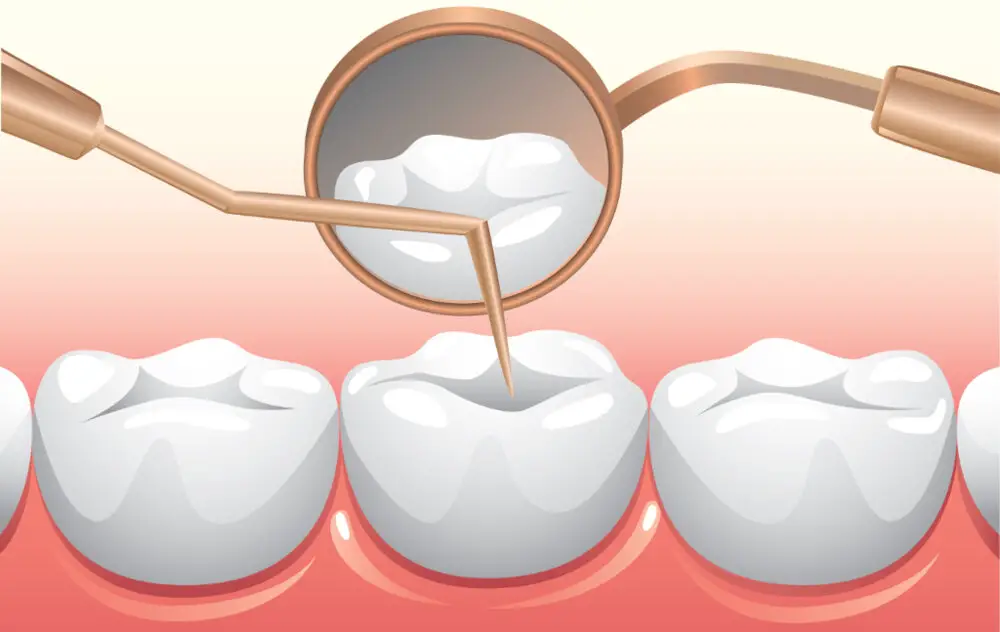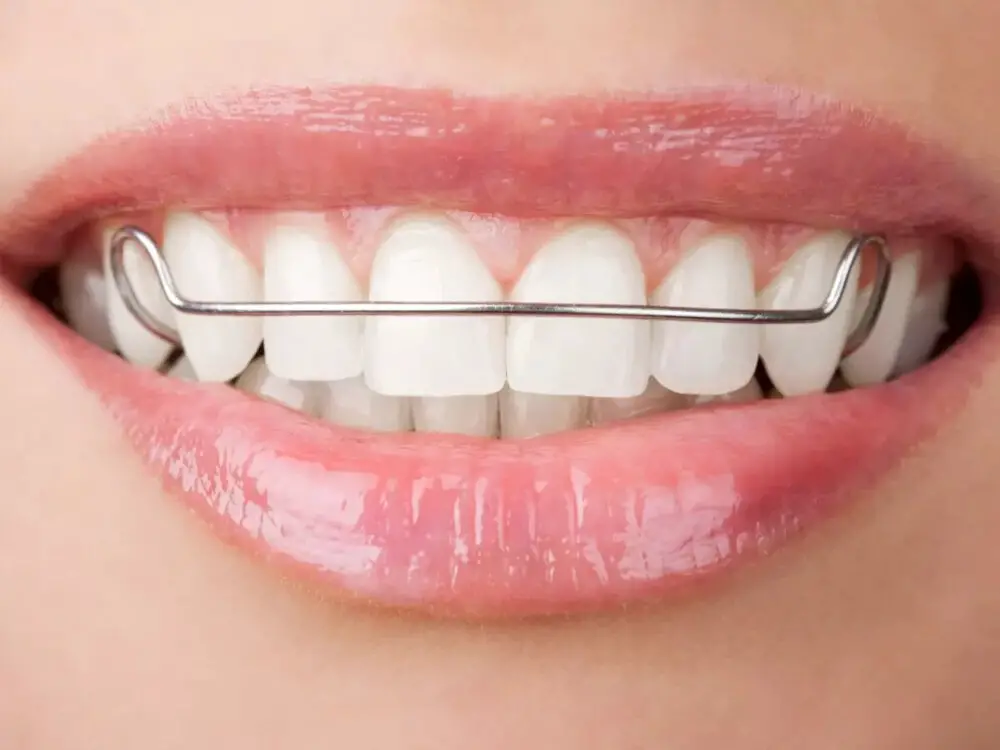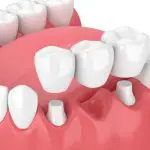Alligator Teeth: Exploring the Fascinating Facts and Figures of How Many Teeth Alligators Have

Alligators are among the most fascinating creatures that exist on our planet. These prehistoric reptiles are known for their immense size, powerful jaws, and sharp teeth. However, one aspect of alligators that often goes unnoticed is the sheer number of teeth they possess. Alligators are not only known for their fierce disposition but also for having one of the most interesting dental structures known to man. In this article, we will delve into the curious world of alligator teeth. We will explore the interesting facts and figures surrounding these remarkable teeth, such as how many teeth alligators have, how they replace their teeth, and the purpose of their unique dental structure. We will also investigate how alligator teeth compare to human teeth and other animals’ teeth, highlighting the evolutionary adaptations that have enabled these reptiles to survive and thrive for millions of years. So, join us on this journey as we explore the fascinating world of alligator teeth.
Alligator teeth are a fascinating feature of these ancient reptiles, known for their sharpness and strength. These teeth are cone-shaped, with a curved edge that allows them to grip onto prey with incredible force. Alligators have multiple rows of teeth, with as many as 80 teeth in their mouths at any given time. The importance of alligator teeth cannot be overstated, as they are crucial to the alligator’s survival. These teeth are used for hunting and defense, allowing alligators to catch and kill prey, as well as fend off potential predators. Additionally, alligator teeth play a vital role in the digestion process, as they are constantly being replaced throughout the alligator’s lifetime, ensuring that the animal can continue to eat and survive. Overall, alligator teeth are an incredible example of the unique adaptations that have allowed these creatures to thrive for millions of years.
Alligators are widely known for their large and powerful jaws, which are full of sharp teeth that can tear through just about anything. But have you ever wondered how many teeth alligators actually have? Well, the answer may surprise you: on average, adult alligators have about 80 teeth in their mouths at any given time. However, unlike humans, alligators do not have a set of permanent teeth. Instead, they continually grow new teeth throughout their lives, with some estimates suggesting that a single alligator can grow and shed up to 3,000 teeth over the course of its lifetime. These teeth are not only numerous but also incredibly durable, with each tooth able to last for several years before being replaced. All in all, the teeth of alligators are a fascinating and impressive feature of these remarkable animals.
Anatomy of Alligator Teeth

Alligator teeth are a fascinating anatomical feature that sets these reptiles apart from other species. Alligators have between 74 and 80 teeth in their mouth at any given time, and they are constantly being replaced throughout their lifetime. The teeth are arranged in rows along the alligator’s jaw, with the front teeth being larger and more pointed than the back teeth. Alligator teeth are designed to help these reptiles catch and consume their prey, which can include fish, turtles, birds, and even other alligators. The anatomy of alligator teeth is intricate and specialized, making them an essential tool for survival. The teeth themselves are made up of dentin, which is a hard, bony material, and covered in enamel, which is a shiny, protective layer. The roots of the teeth are embedded deep within the alligator’s jaw, and new teeth are constantly growing to replace any that are lost or worn down. Alligator teeth are also serrated, which means they have tiny grooves and ridges that help them grip onto their prey and tear through flesh. Overall, the anatomy of alligator teeth is a fascinating example of how evolution has shaped the physical features of these incredible reptiles.
Alligator teeth are impressive structures that are designed to grip, tear, and crush prey. These teeth are sharp and serrated, with a cone-like shape that enables them to penetrate tough hides and bones. Alligators have between 74 and 80 teeth in their mouth at any given time, with new teeth constantly replacing old ones throughout their lifetime. The teeth are rooted in sockets in the alligator’s jawbone, and they are held in place by a strong periodontal ligament. Alligator teeth are made up of three layers: enamel, dentin, and pulp. The enamel is the hard outer layer that protects the tooth from wear and tear, while the dentin provides structural support. The pulp is the soft inner layer that contains nerves and blood vessels. Overall, alligator teeth are fascinating structures that have evolved over millions of years to help these powerful reptiles survive in their natural habitats.
Alligator teeth and human teeth differ in several ways. Firstly, alligator teeth are much larger and stronger than human teeth. They are conical in shape and have a serrated edge, which helps them to effectively catch and hold onto their prey. In contrast, human teeth are much smaller and flatter, with a smoother edge. Secondly, alligators have multiple rows of teeth, with up to 80 teeth in their mouth at any given time, while humans only have two sets of teeth, with a total of 32 teeth. Finally, alligator teeth continuously grow and are replaced throughout their lifetime, whereas human teeth only grow once and are not replaced. These differences in teeth structure and function reflect the unique adaptations of alligators to their environment and predatory habits, and highlight the diversity of teeth in the animal kingdom.
Types of Alligator Teeth

Alligator teeth are an impressive feature of these incredible reptiles. With their sharp and powerful jaws, alligators are capable of crushing and tearing through a variety of prey. Alligator teeth are categorized into two main types based on their location within the mouth: the teeth in the front of the mouth and the teeth in the back. The front teeth are known as incisors, while the back teeth are known as molars. The incisors are located at the front of the alligator’s mouth, and they are used for gripping and tearing prey. They are typically long and pointed, making them ideal for piercing through tough skin and flesh. The molars, on the other hand, are located at the back of the mouth and are used for crushing and grinding prey. These teeth are broad and flat, with ridges that help to break down tough materials. The combination of these two types of teeth allows alligators to efficiently catch and consume their prey, making them one of the most successful hunters in the animal kingdom.
Alligators have an impressive array of teeth, with up to 80 teeth in their powerful jaws at any given time. These teeth are divided into four distinct types, each with its own unique function. The first type is the conical teeth that are designed for gripping and holding prey. The second type is the curved teeth that are used to puncture and tear apart the prey. The third type is the interlocking teeth that help alligators to hold onto their prey securely. Lastly, the fourth type is the crushing teeth that are used to crush the bones and shells of their prey. Alligators are truly fascinating creatures with a remarkable set of teeth that enable them to hunt and survive in their environment.
Alligators have several types of teeth that serve different functions. The largest teeth are the massive, conical-shaped ones found at the front of their jaws, which are used for biting and holding onto prey. These teeth are designed to puncture and crush the tough hides and shells of their victims. Along the sides of their jaws, alligators have smaller, serrated teeth that are used to grip and tear apart prey. These teeth are also capable of self-replacement, as alligators can grow up to 50 new teeth in a single year. In addition to these functional teeth, alligators also have small, needle-like teeth in the back of their mouths that are used for crushing and grinding food. Overall, alligators’ teeth are perfectly adapted to their carnivorous lifestyle and serve a crucial role in their survival.
How Many Teeth Do Alligators Have?

Alligators are fascinating creatures that have been around for over 37 million years. They are known for their powerful jaws and sharp teeth. But have you ever wondered how many teeth do alligators have? Well, the answer is quite impressive. Alligators have an average of 80 teeth in their mouth at any given time. However, they are capable of growing and losing teeth throughout their lives, which means that an alligator can go through thousands of teeth during their lifetime. The teeth of alligators are conical in shape and can grow up to 3 inches long. They are designed for grasping, ripping, and tearing prey apart. Alligator teeth are not only sharp but also incredibly strong, capable of crushing the bones of their prey. Interestingly, alligators have a unique way of replacing their teeth. Instead of growing a new tooth to replace the old one, they continuously produce new teeth throughout their lives, which push out the old, worn-out teeth. This process of teeth replacement ensures that alligators always have a full set of teeth to help them hunt and survive in their habitat.
Alligators are known for their strong jaws and sharp teeth that are designed to help them capture their prey. These reptiles have between 74 and 80 teeth in their mouths at any given time, with the number varying depending on the size and age of the alligator. The teeth are arranged in rows and can be replaced throughout the alligator’s life, with some individuals going through as many as 50,000 teeth during their lifetime. Alligator teeth are not only impressive in number but also in size, with some reaching up to 3 inches in length. Despite their fearsome appearance, alligator teeth are not used for chewing food but rather for grabbing and holding onto prey before swallowing it whole.
Alligators are known for their fearsome teeth which they use to tear apart their prey with ease. However, what many people don’t know is that alligators are constantly replacing their teeth throughout their lifetime. In fact, an alligator can go through as many as 2,000 teeth in its lifetime! These teeth are specifically designed for the alligator’s carnivorous diet and are continually growing and shedding. As a tooth becomes worn or damaged, a replacement tooth will begin to grow in its place. This process ensures that the alligator always has a fresh set of teeth to aid in its hunting and survival. The precise mechanism behind this continuous replacement of teeth is still not entirely understood, but it is thought to involve the formation of new tooth buds within the alligator’s jaw. It’s just one more fascinating aspect of these ancient and impressive creatures.
Fun Facts About Alligator Teeth

Alligator teeth are an interesting subject to explore, and there are many fascinating facts surrounding them. For starters, alligators are known to have around 80 teeth in their mouth at any given time, and they can go through as many as 3,000 teeth throughout their lifetime. These teeth are not only numerous but also incredibly sharp, and they can grow up to 3 inches long. Furthermore, alligator teeth are not rooted in the jaw like human teeth; instead, they are embedded in sockets in the bone, which allows them to be replaced quickly when they fall out. This is why alligators are known for their formidable biting power, and it is also why they can continue to eat even if they lose a few teeth. Another fascinating fact about alligator teeth is that they are not all the same size. Alligators have four types of teeth in their mouth, including incisors, canines, premolars, and molars. The incisors are located at the front of the jaw and are used for gripping and tearing food, while the canines are more prominent and are used for puncturing and holding onto prey. The premolars and molars are located at the back of the jaw and are used for grinding and crushing food. All of these teeth work together to help the alligator consume its prey, and the different sizes and shapes of the teeth are essential to this process. In short, alligator teeth are a complex and fascinating subject, and there is much to learn about these powerful and efficient predators.
When it comes to alligator teeth, there are some fascinating and lesser-known facts that make them stand out. For starters, alligators are known to lose teeth quite frequently, with some estimates suggesting that they can go through as many as 2,000 teeth in their lifetime. Additionally, alligator teeth are not all the same size and shape, with some being designed for crushing and others for tearing. What’s more, alligator teeth are incredibly strong, with some studies suggesting that they can exert up to 3,000 pounds of pressure per square inch. Finally, while alligator teeth are often associated with danger, they actually serve as an important tool for alligators to catch and consume their prey, and are an essential part of their overall anatomy.
Alligator teeth play a vital role in alligator behavior and ecology. These teeth are not only designed to tear through flesh and crush bones but also serve as a defense mechanism against predators. Alligators use their teeth to grip and hold onto their prey, preventing them from escaping. Additionally, their teeth are continually replaced throughout their lives, allowing them to maintain their sharpness and strength. With an average of 80 teeth in their jaw, alligators use their teeth to regulate their body temperature by basking in the sun with their mouths open, allowing heat to be absorbed through their teeth. Overall, alligator teeth are a crucial component of their survival in the wild, aiding them in hunting, defending themselves, and regulating their body temperature.
The article \Alligator Teeth: Exploring the Fascinating Facts and Figures of How Many Teeth Alligators Have\ delves into the interesting world of these reptiles’ unique dental system. Alligators have a total of 80 teeth, which they can regrow throughout their lifetime. They have two types of teeth: conical and pedunculate. The conical teeth are used for gripping and holding prey, while the pedunculate teeth are used for crushing and grinding. Alligators use their teeth not only for food but also to establish dominance and defend their territory. Moreover, their teeth are structured in a way that allows them to continually replace damaged or lost teeth, making them efficient predators in their natural habitat.
Alligator teeth are a marvel of nature, uniquely crafted to suit the predatory lifestyle of these fearsome reptiles. With their sharp and pointed shape, these teeth are perfectly adapted for grasping, tearing and crushing prey. The sheer number of teeth that alligators possess is also impressive, with some species having up to 80 teeth in their powerful jaws. These teeth are not only vital for hunting and feeding, but they also play a crucial role in the social hierarchy of alligator communities, helping to establish dominance and ward off rivals. It’s clear that alligator teeth are not just a fascinating aspect of these amazing creatures, but an essential part of their survival and success in the wild.
Conclusion

In conclusion, the alligator’s teeth are a remarkable feature that has been shaped by millions of years of evolution. These aquatic reptiles have managed to adapt to their environment through their unique dental structure, which allows them to grasp and crush their prey effortlessly. Despite the fact that alligators have up to 80 teeth, they only use a fraction of them at any given time, as they are constantly being replaced throughout their lifetime. These fascinating facts and figures about alligator teeth highlight the complexity and ingenuity of nature’s design, and remind us of the importance of preserving these magnificent creatures and their habitats for future generations to enjoy.







